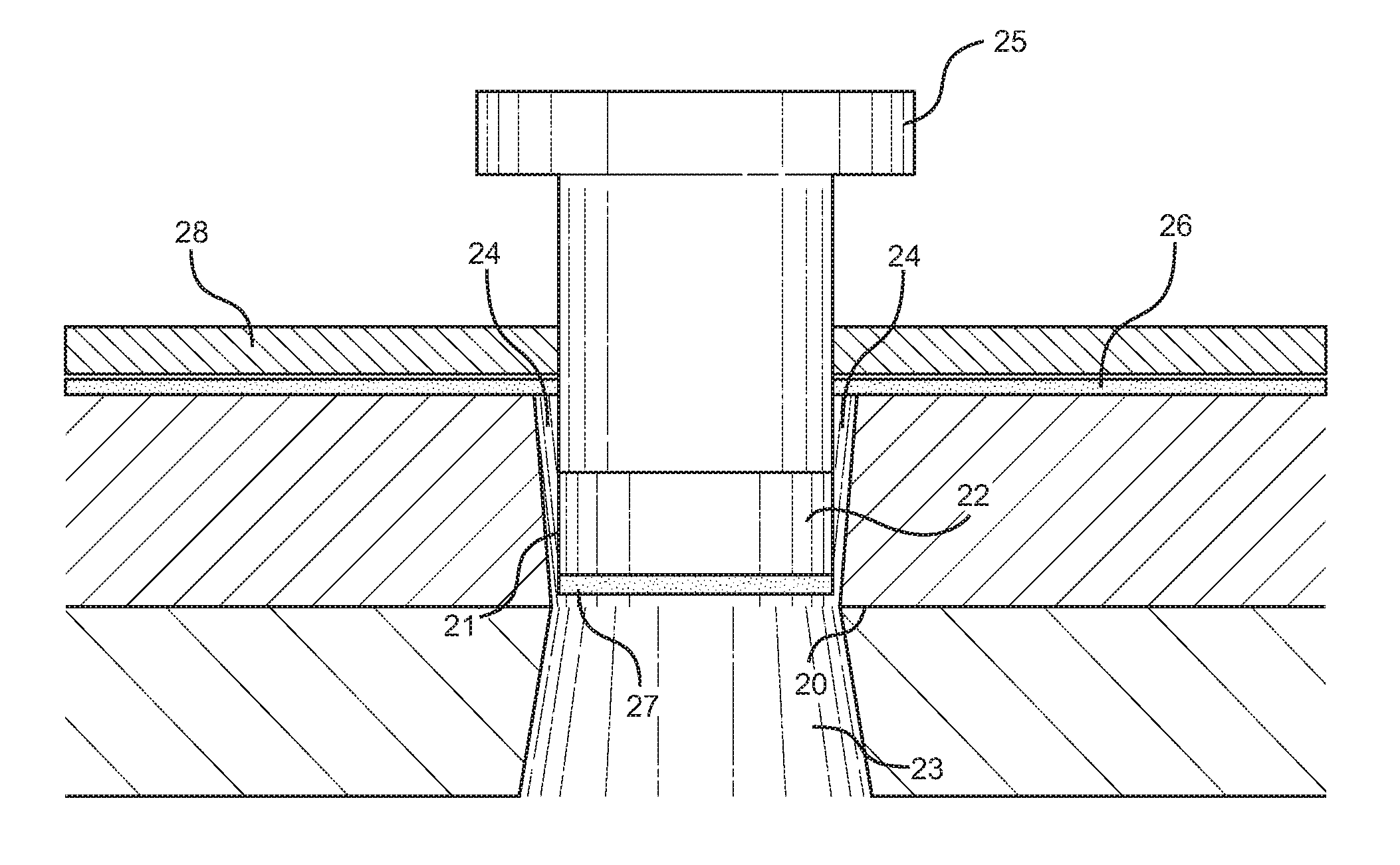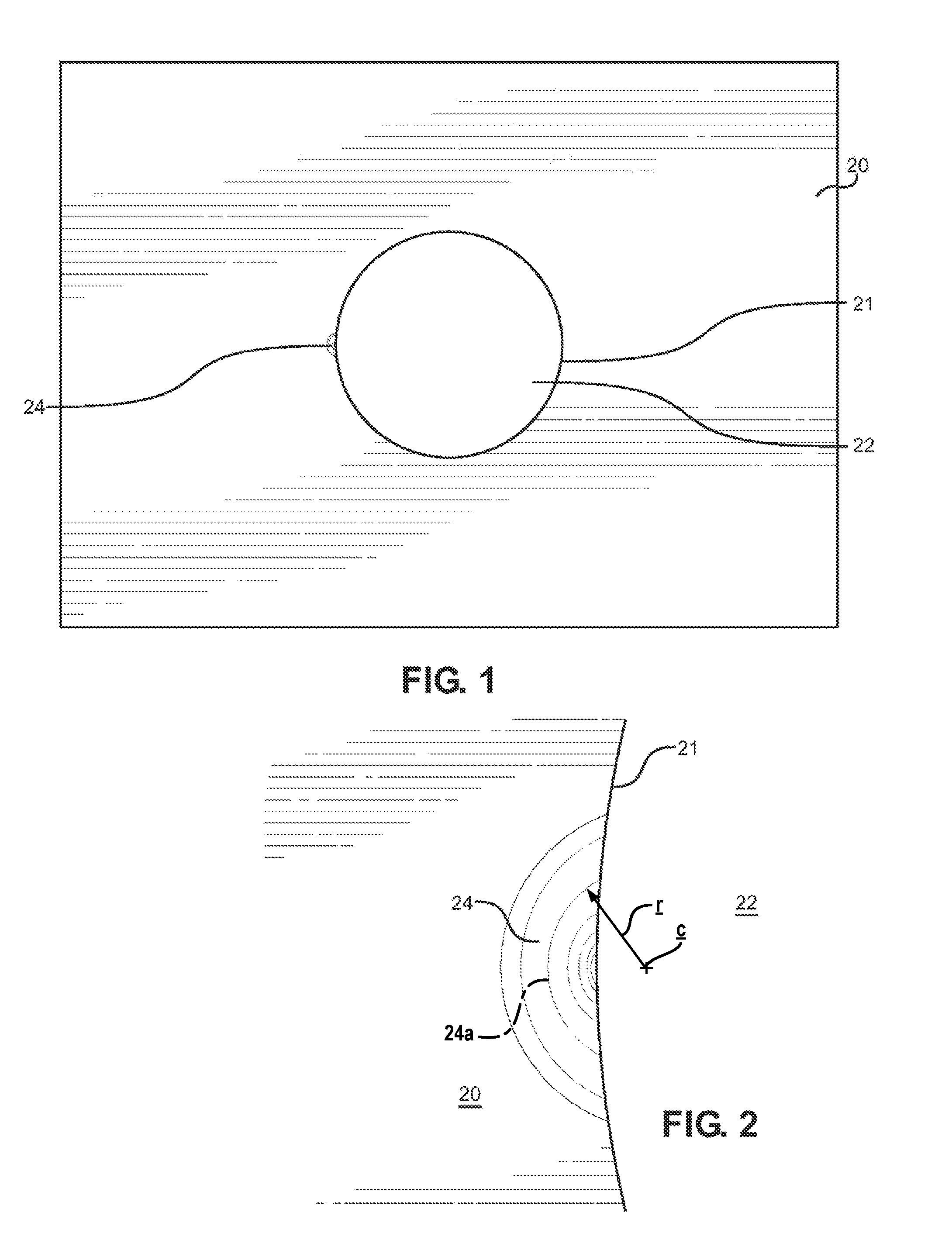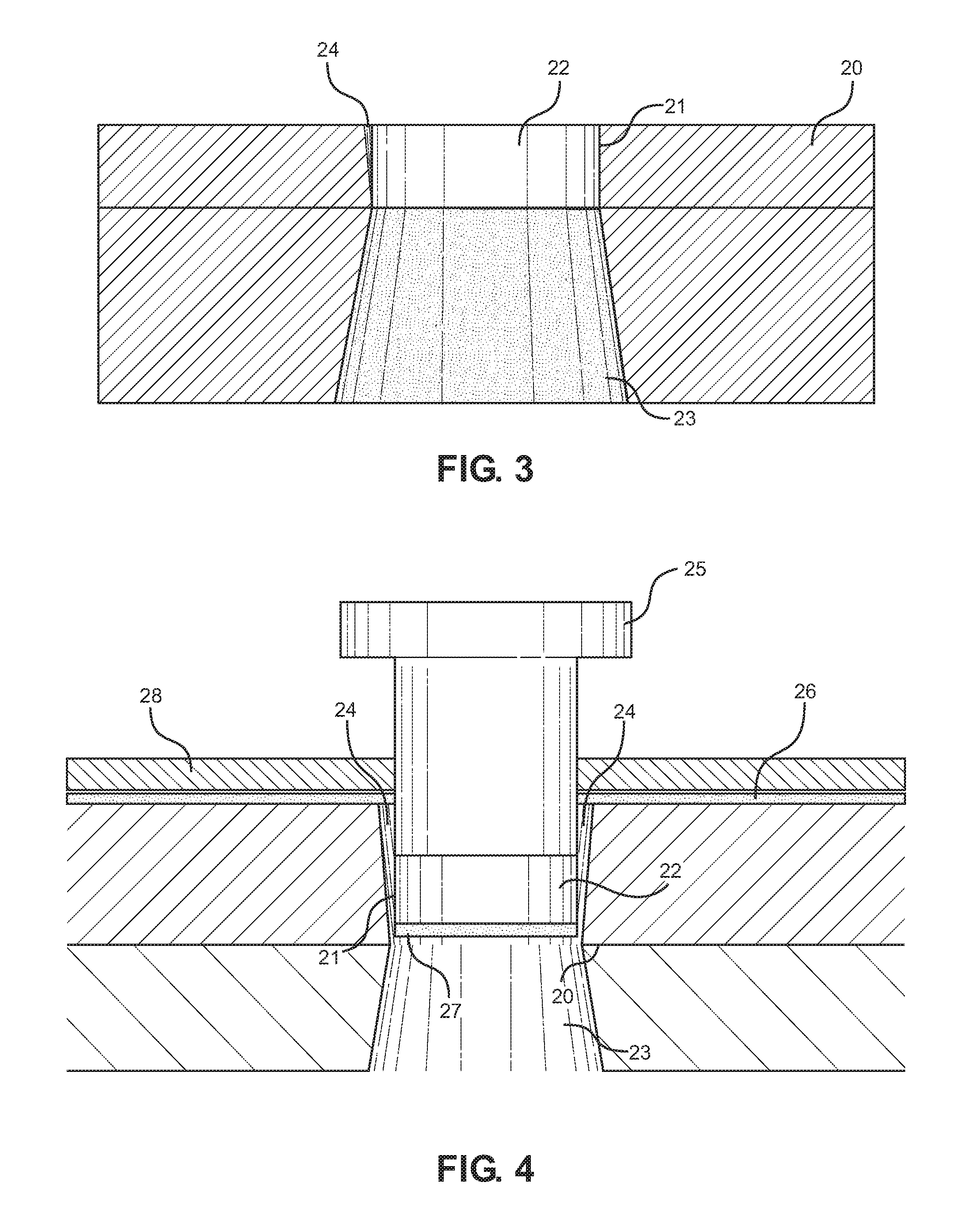Stamping Slug Retention Recess and Method
a technology of retaining recesses and slugs, which is applied in the field of die trim assembly, can solve the problems of damage to parts, expensive repair or replacement, damage to die tooling, etc., and achieve the effects of convenient addition, cost-effectiveness, and reliable securing of slugs in die trim inserts
- Summary
- Abstract
- Description
- Claims
- Application Information
AI Technical Summary
Benefits of technology
Problems solved by technology
Method used
Image
Examples
first embodiment
[0056]Referring now to FIG. 5, there is shown a side view of the disclosed recess, wherein the recess is created via a vertical conical extrusion. More specifically, the recess is cut with a conical shape from an angle perpendicular to the cutting edge of the die trim insert 20 such that the side of the conical extruder is aligned with a vertical axis and parallel to the die trim profile wall 21. The recess has a larger diameter at an upper portion of the recess 24, and a smaller diameter at the lower end of the recess 24. The upper portion of the recess 24 is level with the cutting edge of the die trim insert 20 and the narrower lower end of the recess 24 extends below the lower end of the die trim profile opening 22 and into the taper relief 23. Accordingly, the length of the recess 24 extends through the die trim insert 20. The die trim insert 20 is above the die trim support block 29. Die trim support block 29 has an opening that is larger than die trim profile opening 22, which...
second embodiment
[0059]Referring now to FIG. 8, there is shown a side view of the disclosed recess added via an angled conical extrusion. More specifically, the recess is cut with a side of the conical extruder that is tapered to less depth towards the bottom edge of the trim profile wall 21. In this embodiment, the recess 24 tapers to less depth as it nears the taper relief 23. Alternatively, the recess 24 may taper out at the taper relief 23. Accordingly, the length of the recess 24 is less than, equal to, or greater than the depth of the die trim profile opening 22 and is longer than the distance the trim punch enters the die trim profile opening 22. The angled conical extrusion is added to a new or existing die trim profile opening 22 using wire EDM, or other suitable methods.
[0060]Referring now to FIG. 9, there is shown a front cross-sectional view of the second embodiment of the recess 24 located on the die trim profile wall 21. The second embodiment of the recess 24 is aligned substantially v...
third embodiment
[0064]Referring now to FIGS. 12 and 13, there are shown frontal views of the disclosed recess created via an angled cylindrical extrusion. The recess 24 assumes the shape of the cylindrical cut, but the width and depth of the recess changes along its length. As such, the recess 24 captures slugs and prevents the slugs from jamming the in-feeding material. The cylindrical cut of the recess 24 has similar features as the previous embodiments. This embodiment also creates a small lug on the slug, which takes the shape of the recess at the top cutting edge. The area of the recess 24 decreases towards the bottom of the recess 24. The slug that is created near the top of the recess 24 is driven to the bottom of the recess 24, where the area of the recess 24 is now smaller. This creates a pinching action on the slug itself.
[0065]Referring now to FIGS. 14a and 14b, there are shown an embodiment of the disclosed recess in a rectangular die trim profile opening 22. Two recesses 24 are added t...
PUM
| Property | Measurement | Unit |
|---|---|---|
| depth | aaaaa | aaaaa |
| height | aaaaa | aaaaa |
| cross-sectional area | aaaaa | aaaaa |
Abstract
Description
Claims
Application Information
 Login to View More
Login to View More - R&D
- Intellectual Property
- Life Sciences
- Materials
- Tech Scout
- Unparalleled Data Quality
- Higher Quality Content
- 60% Fewer Hallucinations
Browse by: Latest US Patents, China's latest patents, Technical Efficacy Thesaurus, Application Domain, Technology Topic, Popular Technical Reports.
© 2025 PatSnap. All rights reserved.Legal|Privacy policy|Modern Slavery Act Transparency Statement|Sitemap|About US| Contact US: help@patsnap.com



